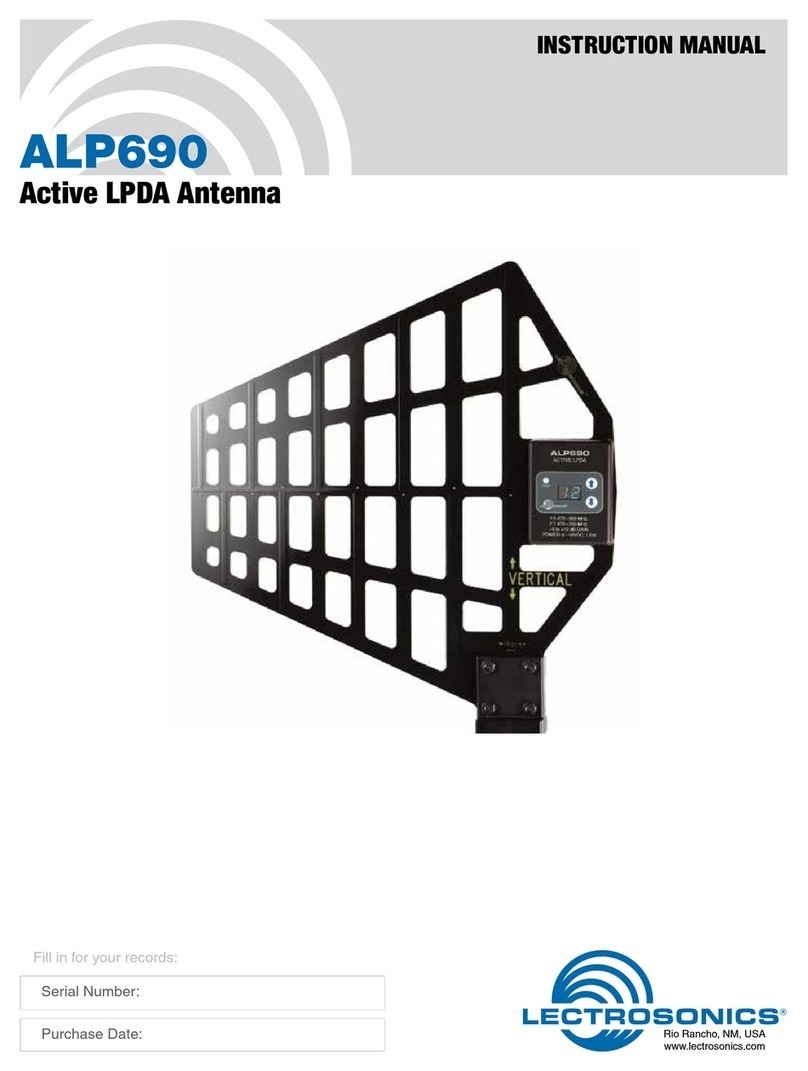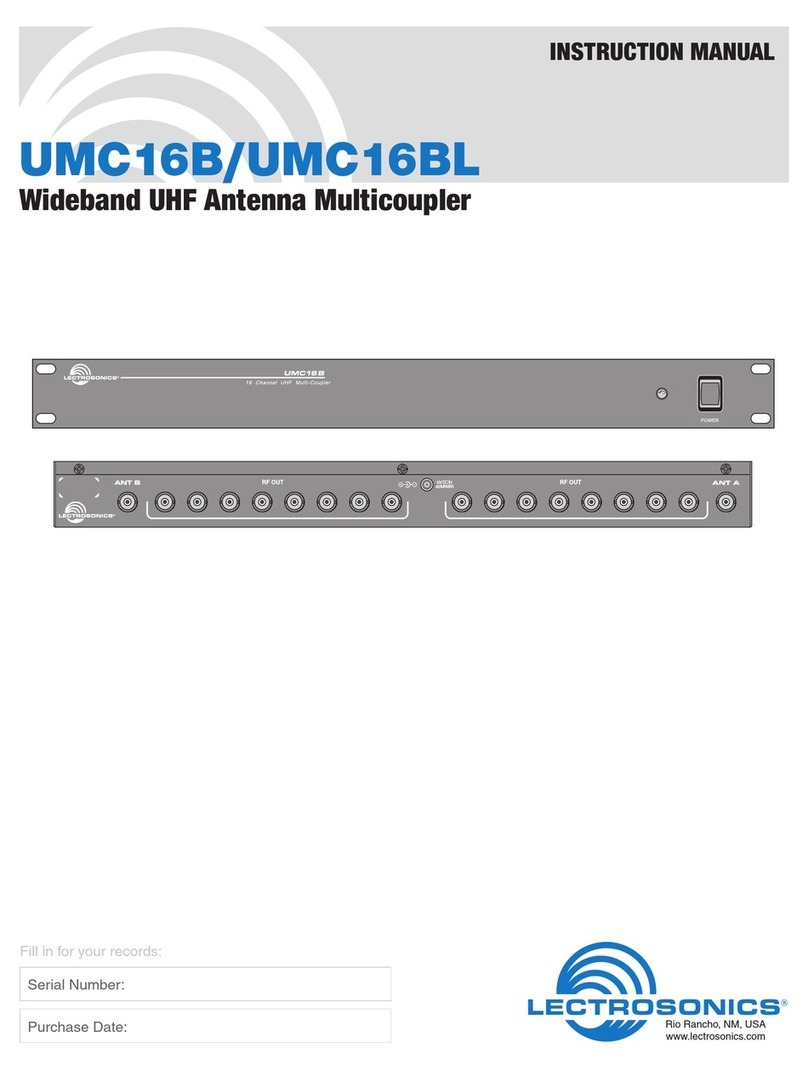
Rack Mount Multicoupler
Rio Rancho, NM 9
DIRECT SIGNAL
INDIRECT SIGNAL
DIRECT SIGNAL
INDIRECT SIGNAL
RANSMITTER
PHASE
CANCELLATION
REFLECTIVE SURFACE
Multi-Coupler
Antenna Use and Placement
Try to position the antennas so that they are not within 3
or 4 feet of large metal surfaces. It is also good to
maintain a direct “line of sight” between the transmitter
and the receiver antennas. In situations where the
operating range is less than about 50 feet, the antenna
positioning is much less critical.
A wireless transmitter sends a radio signal out in all
directions. This signal will often bounce off nearby
walls, ceilings, metal surfaces, etc. and a strong reflec-
tion can arrive at the receiver antenna along with the
direct signal. If the direct and reflected signals are out
of phase with each other a cancellation will occur as the
signals mix at the antenna input. The result will be a
“drop-out.”
A drop-out usually sounds like a brief noise burst, click,
pop, or something similar. In severe cases, may result in
a complete loss of the carrier and the sound. A drop-out
situation may be either better or worse as a crowd fills
and/or leaves the room, or when the transmitter and
receiver anrtennas are moved to different locations.
Diversity receiver designs include a method of selecting
or combining two antennas to reduce or eliminate
multipath drop-outs. The antennas must be placed at
least a half wavelength apart to achieve a noticeable
reduction in drop-outs, or better yet, several feet apart.
It is generally best to use two of the same type anten-
nas on a diversity receiver, as some designs combine
both antenna signals into a single receiver with a phase
correction between them to maximize the resultant RF
signal. If one antenna signal is significantly stronger
than the other, the signal from the weaker antenna will
do little to prevent multipath drop-outs that occur at the
stronger antenna.
The diagram below depicts a classic multipath drop-out
situation. In some diversity designs, a second antenna
in a different location is selected instead of the first
antenna, following the logic that a multipath drop-out is
not likely to occur simultaneously at both antennas.
Other designs combine the two antenna signals and
control the phase of one them to make sure they always
add to each to provide a stronger signal.
Available Antennas
The UMC200B will operate with any 50 ohm antenna
with a BNC connector, provided the antenna is tuned to
the same frequency band. Two unique models are
offered by Lectrosonics to help optimize reception in
any location or installation.
The SNA600 is a versatile, collapsible dipole antenna
that provides a circular coverage pattern and a 100
MHz passband. The elements are tuned to the needed
frequency using a scale along the feed line. A mounting
stud and bracket are included with the unit.
The ALP600 is a directional antenna with 4.5 dB of gain
covering a broad bandwidth from 500 to 800 MHz. It is
constructed of FR4 fiberglas in a rugged assembly. It is
available in several models,
a standard version, one
with a built-in amplifier and
a ruggedized version for
field production in adverse
conditions.
Mounting options include
threaded rods and adapt-
ers to fit lighting equipment,
tripods, mic stands and attach-
ment to building surfaces.






























